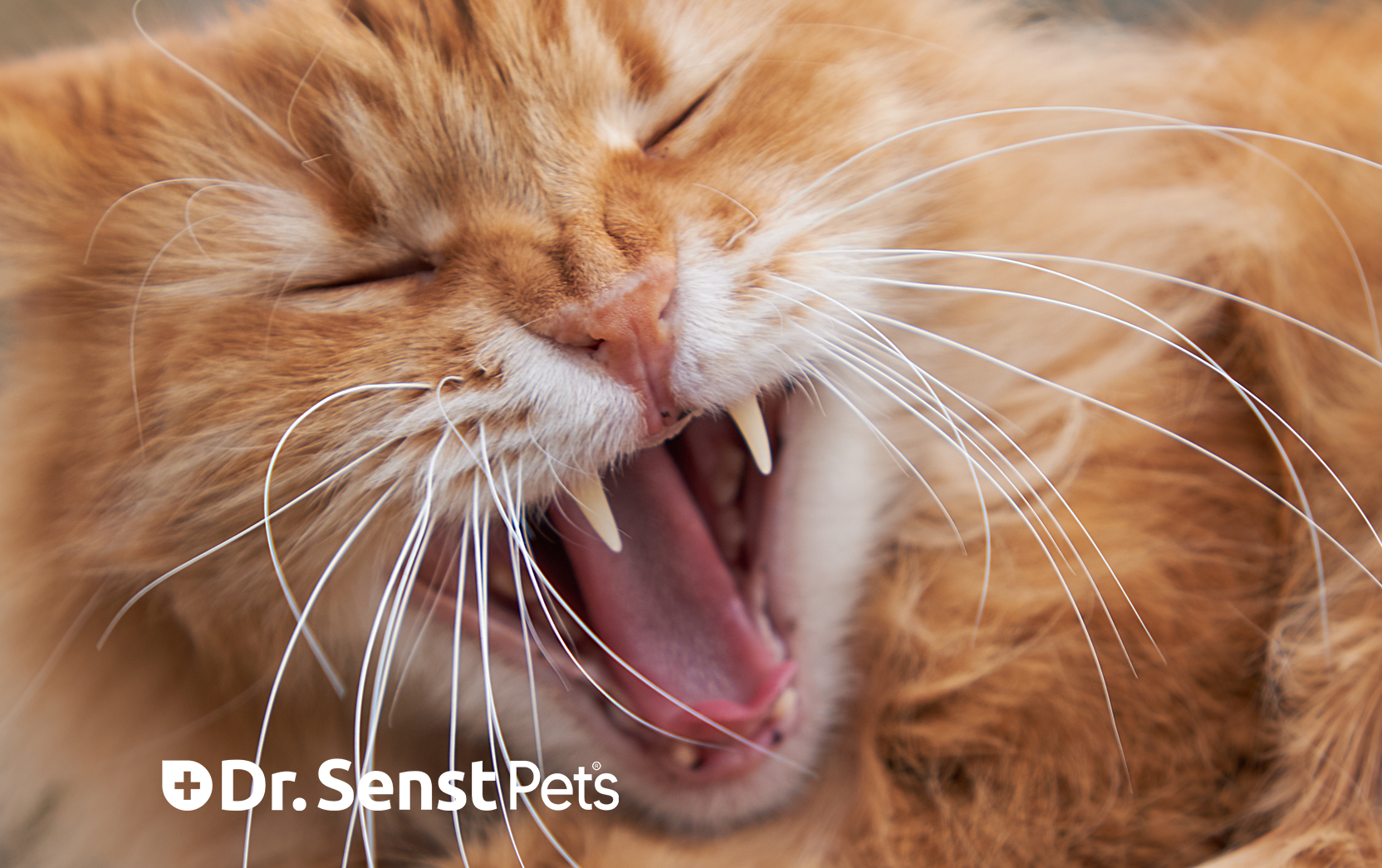
- by Dr.Thilo Senst
Understanding Cat Flea Allergies: Symptoms and Effective Treatments
- by Dr.Thilo Senst
Understanding Cat Flea Allergies: Symptoms and Treatments
Flea allergies are one of the most common causes of itching, discomfort, and skin irritation in cats. Flea bites don’t just cause an itchy nuisance; for some cats, they can lead to severe allergic reactions known as flea allergy dermatitis (FAD). If your cat suffers from flea allergies, understanding the causes, symptoms, and treatments is essential for effective management. This comprehensive guide will cover everything you need to know about cat flea allergies, their symptoms, and the best treatments to keep your feline friend comfortable and healthy.
Flea allergies, also known as flea allergy dermatitis (FAD), occur when a cat has an allergic reaction to flea saliva. Fleas are tiny, parasitic insects that feed on your cat’s blood, but for cats with allergies, the flea’s bite introduces proteins that trigger a hypersensitive response. This reaction can lead to intense itching, skin irritation, and hair loss.
According to the British Veterinary Association (BVA), flea infestations are the most common external parasite problem in cats, affecting around 20-30% of cats annually in the UK.
While most cats will experience discomfort from flea bites, those with flea allergies are particularly sensitive and may develop severe symptoms even with a minimal flea presence.
Identifying the symptoms of cat flea allergies is crucial for early treatment and relief. Common signs include:
A survey by PDSA UK found that 1 in 10 cats taken to the vet for skin problems are diagnosed with flea allergy dermatitis, highlighting how widespread this issue is.
The allergic reaction in cats is caused by flea saliva. When a flea bites, it injects saliva into the skin to prevent blood clotting. Cats with flea allergies are hypersensitive to one or more proteins in the saliva, causing their immune system to overreact. Even a single flea bite can trigger intense itching and skin irritation in allergic cats, lasting for days or even weeks after the bite.
The cycle of flea allergy dermatitis (FAD) can be compared to a vicious loop:
Breaking this cycle is essential for controlling the condition and preventing further complications.
If you suspect your cat has flea allergies, it’s important to consult with a veterinarian for a proper diagnosis. The vet will typically perform:
Even if you don't see fleas on your cat, they may still have been bitten. Fleas can be difficult to spot as they are tiny and fast-moving, so don’t rule out flea allergies based solely on visible signs.
Treating cat flea allergies requires a multi-step approach to relieve your cat’s discomfort and prevent future flare-ups.
The most important step in managing cat flea allergies is effective flea prevention. Using a flea control product like Dr. Senst Antiseptic Flea Treatment For Cats can help prevent flea infestations. It’s essential to treat all pets in the household, as fleas can easily spread between animals.
For cats already suffering from flea allergy dermatitis, soothing the itching is essential for their comfort. Dr. Senst Antiseptic Itchy Cats Spray is designed to reduce inflammation and promote healing.
If your cat has developed secondary infections due to excessive scratching and biting, your vet may prescribe antibiotics or antifungal medications to clear up the infection.
According to Blue Cross UK, the average pet owner in the UK spends £100-£200 annually on flea treatments and prevention. Regular preventive care can reduce the long-term costs associated with managing flea infestations and allergies.
Q: Can indoor cats get flea allergies?
A: Yes, even indoor cats can be affected by fleas. Fleas can enter your home on clothing, other pets, or through open doors and windows.
Q: How long does it take for flea allergy symptoms to resolve?
A: Once flea control measures are in place, it may take a few weeks for symptoms to completely resolve. It’s important to maintain consistent flea prevention to avoid future outbreaks.
Q: What should I do if my cat has a severe allergic reaction?
A: If your cat shows signs of severe flea allergy dermatitis, including intense scratching, open sores, or hair loss, consult your vet immediately for professional treatment and advice.
Managing cat flea allergies requires consistent care and preventive measures. By following the recommended treatments, you can relieve your cat’s discomfort and prevent future flare-ups. Here are some of the most effective products from the Dr. Senst Pets range that can help manage and prevent cat flea allergies:
Dr. Senst Antiseptic Flea Treatment For Cats: This treatment effectively kills fleas and prevents infestations, providing relief for flea-allergic cats.
Dr. Senst Antiseptic Itchy Cats Spray: Ideal for cats suffering from flea allergies, this spray soothes itching and helps promote the healing of irritated skin.
Dr. Senst Cat Calming Hemp Oil for Cats: If your cat is highly stressed due to itching and discomfort, this calming hemp oil can provide relief by promoting relaxation and reducing anxiety.
By incorporating these products into your cat’s flea prevention routine, you can ensure their comfort and well-being year-round.
![]()
Enter your details & download our comprehensive 50+ page printable Dr. Senst Pet Care Planner completley FREE! - keep track of all your pet’s needs, from medical history and training to vet visits, grooming, diet, and more!










Share:
How to Clean Your Dog’s Teeth at Home: Step-by-Step Guide for Healthy Gums
Cat Ear Health: Tips for Clean Ears and Preventing Infections